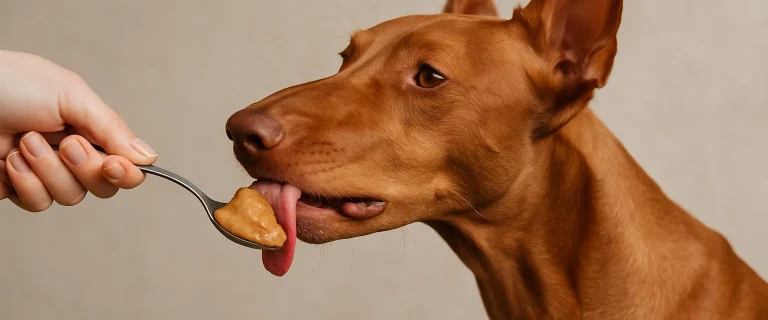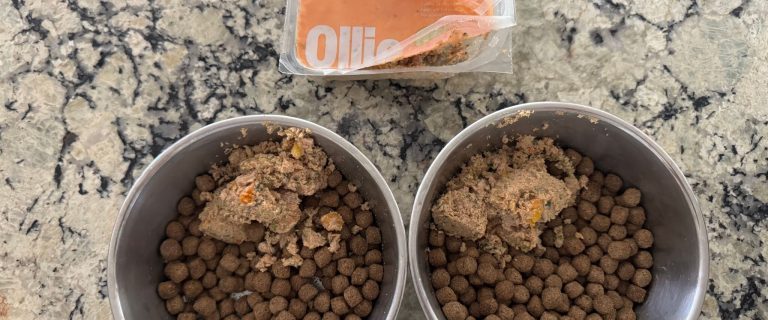Are you wondering how long it takes a puppy to adjust to new food?
I had the same question when my puppy suddenly got the runs after I got him high-quality dog food.
While many dogs can switch foods without any issues, some pups aren’t so fortunate.
Those with sensitive tummies or food allergies can take a little longer to fully adjust.
Turns out, I did it a little too fast!
So, today I’m going to help you avoid my mistake by explaining how to switch dog food.
Related: Best puppy food for giant breeds
How long does it take a puppy to adjust to a new food?
Speaking from experience, puppies can take anywhere from a few days to two weeks until they get used to their new food.
Of course, if you have a puppy with a sensitive stomach, it might be longer – five to six weeks at most.
Fortunately, there are some things you can do to ensure a smooth transition with no stomach discomfort.
Pick the right food brand
I see a lot of people who buy low-quality dog food because it’s cheap. While not everybody can afford the best dog food, some low-quality brands are just not good at all for your pooch.
It’s true that dogs are omnivore animals and that they can digest both meat and grains well.
However, a lot of these cheap brands usually contain a lot of grains and vegetables and not enough meat to satisfy the dog’s needs.
Low-quality also means that the dog might not get all the necessary nutrients and develop vitamin deficiencies.
Not to mention the artificial ingredients, which might irritate the dog’s stomach.
Here are some guidelines on how to choose the best dog food for your pooch:
- Look at the ingredients. The first one should be “meat” or “meat meal.” Stay away from those reading meat by-products.
- Consider your dog’s age and activity. An active dog or a puppy will need more calories than an older dog or a lazy one.
- Check if the label has a statement from the Association of American Feed Control Officials(AAFCO). It’s an excellent indication if the brand has all the necessary nutrients for a healthy dog.
Change the food slowly
As some of you might have already discovered sudden food change leads to diarrhea, stinky poop, and in some cases, vomiting. That’s a reaction of the organism to the change in the gut flora.
The best solution to any stomach issues caused by diet change is to introduce the new food slowly. You can do that by mixing the new food with the old one. Start with the following proportions:
- 75% old food
- 25 % new food
Then observe the puppy. During the first few days, there might be a slight discomfort and a few extra trips to the backyard, but that’s normal.
If issues like runny stools or vomiting don’t persist, you can continue to decrease the quantity of the old food after 2-3 days to 50 %.
However, if the little one continues to have an upset stomach, talk to your vet.
Next, continue to feed your puppy the 50-50 mix at least for a week to make sure that the transition is going smoothly. Then you can lower the proportion of the old brand to 25%.
By that time, your puppy shouldn’t have any lingering digestive discomfort. Just in case, wait a couple of more days and then eliminate the old brand.
Pick a brand with similar content
Unfortunately, sometimes you don’t have the time for a slow transition.
For example, when your brand has been recalled, or the manufacturer has stopped producing it for some reason.
In such cases, you can avoid stomach problems by looking for a brand with a similar formula. For example, if your pooch has been eating chicken and pea, look for the same ingredients. Then compare the content of protein, fat, and fiber and get the one that matches the old food the most.
Avoid brands which differ significantly from your old brand, and you should be fine.
You might also consider easily digestible formulas if your puppy has a sensitive stomach.
Small meals throughout the day
Another approach you can employ is offering small portions of the new food. Here’s how to do it:
- Don’t give the dog his usual portion, but a small quantity of the new food.
- Wait a couple of hours to see if your dog will experience any stomach discomfort.
- If there are no problems, give another small meal.
- Continue to increase the quantity of the new food and lengthen the feeding intervals.
Following this strategy, you should be back to your regular feeding schedule in 2-3 days.
What to do if the dog doesn’t like the food?
Sometimes, as you’ll discover, your pet will show no interest in the new, expensive food you’ve just brought.
Dogs, just like people, have preferences. Your pooch might not like chicken, beef, or duck or the food might have a strange taste.
Unfortunately, you can’t tell from the start whether the food will be acceptable or not. So, avoid buying new brands in bulk.
Instead, keep tabs on what your pooch likes and get him a small bag of whatever formula he loves the most. Then do a test run to see if Puffy will eat the new brand.
As you can see, changing a dog’s diet requires patience and time.
But if you have any concerns about the food or the pet has diarrhea for more than a day, you should speak with your vet ASAP.
What do you think? How long did it take your puppy to adjust to new food? We’d love if you share your experience with us.
Author
-

I’ve grown up surrounded by animals – dogs, cats, cows, goats, sheep, and horses and that has shaped me into what I am today – a crazy cat lady who always has a place for one more cat (or a dog). I’ve got two female cats – Kitty and Roni, and two tomcats – Blacky and Shaggy, but I also feed my neighbors’ cats when they come for a visit. I just can’t say no to them.
View all posts




